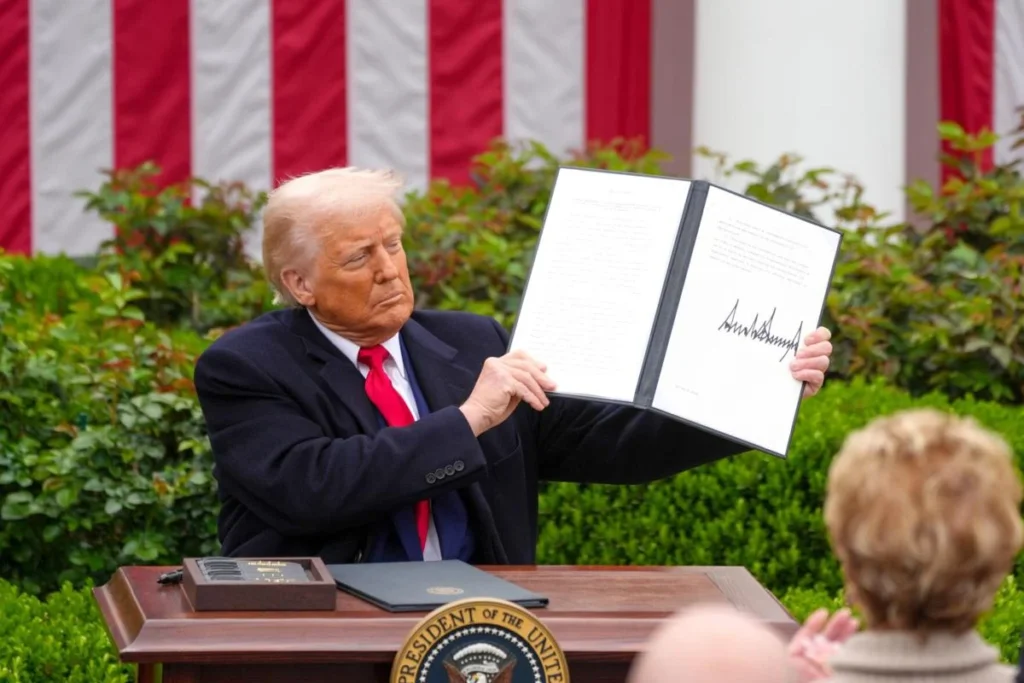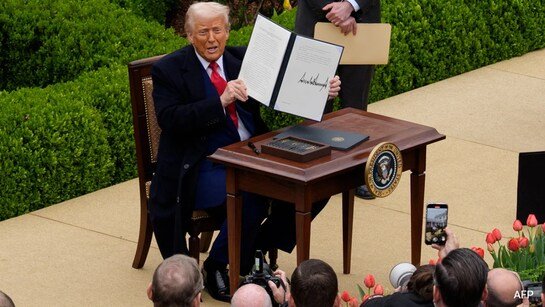New York, USA – July 14, 2025 – U.S. stock futures experienced a sharp decline on Monday, with Dow Jones Industrial Average futures dropping over 200 points, as markets reacted to President Donald Trump’s weekend announcement of new, steep 30% tariffs on imports from Mexico and the European Union. The move, set to take effect on August 1, has reignited global trade tensions and rattled investor confidence.
As of early Monday morning, Dow Jones Industrial Average futures (YM00) were down approximately 0.5%, with S&P 500 futures (ES00) and Nasdaq-100 futures (NQ00) also slipping around 0.5% and 00.6%, respectively. The immediate market response signals growing concern among investors who, despite repeated tariff threats in recent months, appear to be taking this latest escalation more seriously.
A Broadening Tariff Offensive
President Trump’s latest tariff threat was issued on Saturday via his social media platform, Truth Social. In separate letters to Mexican President Claudia Sheinbaum and European Commission President Ursula von der Leyen, Trump cited Mexico’s alleged failure to curb the flow of fentanyl and other narcotics and the EU’s persistent trade imbalances with the U.S. as justifications for the new duties.
This announcement follows a series of recent tariff warnings and impositions:
- Canada: Last week, a 35% tariff was announced on Canadian goods, also effective August 1.
- Japan and South Korea: Tariffs of 25% were previously announced for imports from these nations.
- Other Nations: Trump had also issued tariff warnings to over 20 nations, with potential duties ranging from 20% to 50% for countries including Brazil, the Philippines, Algeria, and Sri Lanka.
The 30% tariff on Mexico and the EU is particularly impactful given their status as two of the largest U.S. trading partners. These new tariffs are stated to be in addition to any existing sector-specific levies, such as the 50% on steel and aluminum and 25% on autos that remain in place for some partners.

Global Reactions and Market Jitters
The European Union was quick to respond. On Sunday, European Commission President Ursula von der Leyen stated that the EU would delay retaliatory tariffs against U.S. goods, which were set to take effect Monday, to allow more time for negotiations.
“This is now the time for negotiations,” she said, while cautioning that “imposing 30% tariffs on E.U. exports would disrupt essential transatlantic supply chains, to the detriment of businesses, consumers, and patients on both sides of the Atlantic.”
Italy’s Foreign Minister Antonio Tajani further indicated on Monday that the EU has already prepared a retaliatory tariff list worth 21 billion euros ($24.5 billion) on U.S. goods, ready to be implemented if a deal is not reached. European automobile and retail shares were notably down on Monday.
Mexico has also pushed back, calling the proposed tariffs “unfair” and expressing a willingness to continue dialogue. Mexican President Claudia Sheinbaum urged for a “cool head” in facing the problem and reiterated that her country’s sovereignty is “never negotiable.”
“TACO” Theory Under Test
Financial markets have, for months, largely taken President Trump’s tariff threats “in stride,” often dismissing them as noise or expecting them to be postponed, a phenomenon dubbed the “Trump always chickens out” (TACO) trade. However, the latest announcements, with concrete effective dates and significant percentages, are putting this theory to a serious test.
“Markets have priced it all mainly as noise, but there’s a growing sense that this time may be different,” noted Stephen Innes, managing partner at SPI Asset Management, on Sunday night. “The 30% number is not just headline bait; it’s punitive by design, and the street will grow increasingly jittery as the tariff deadline clock ticks down.”
Last week, U.S. stocks already saw a retreat, with the Dow Jones Industrial Average losing 1% for the week, snapping a three-week winning streak, as tariff worries began to mount.
Those who aren’t aware of this, below we have added a visual representation of the same.
What Lies Ahead for Investors
Investors will now closely monitor several key developments:
- Negotiations: The willingness of the U.S., EU, and Mexico to engage in effective negotiations before the August 1 deadline will be critical.
- Economic Data: Upcoming economic reports, particularly Tuesday’s consumer price index (CPI) report for June, will shed more light on inflation, which tariffs could further exacerbate.
- Corporate Earnings: The second-quarter earnings season, kicking off with major companies like JPMorgan Chase & Co. (JPM) and Netflix Inc. (NFLX), will provide the first full-quarter look at how Trump’s tariff policies are impacting corporate profits and supply chains. Analysts currently expect the lowest level of quarterly growth per share since late 2023.
The unfolding trade tensions underscore the continued volatility and uncertainty facing global markets as governments grapple with protectionist policies and their potential impact on international trade, supply chains, and economic growth.




